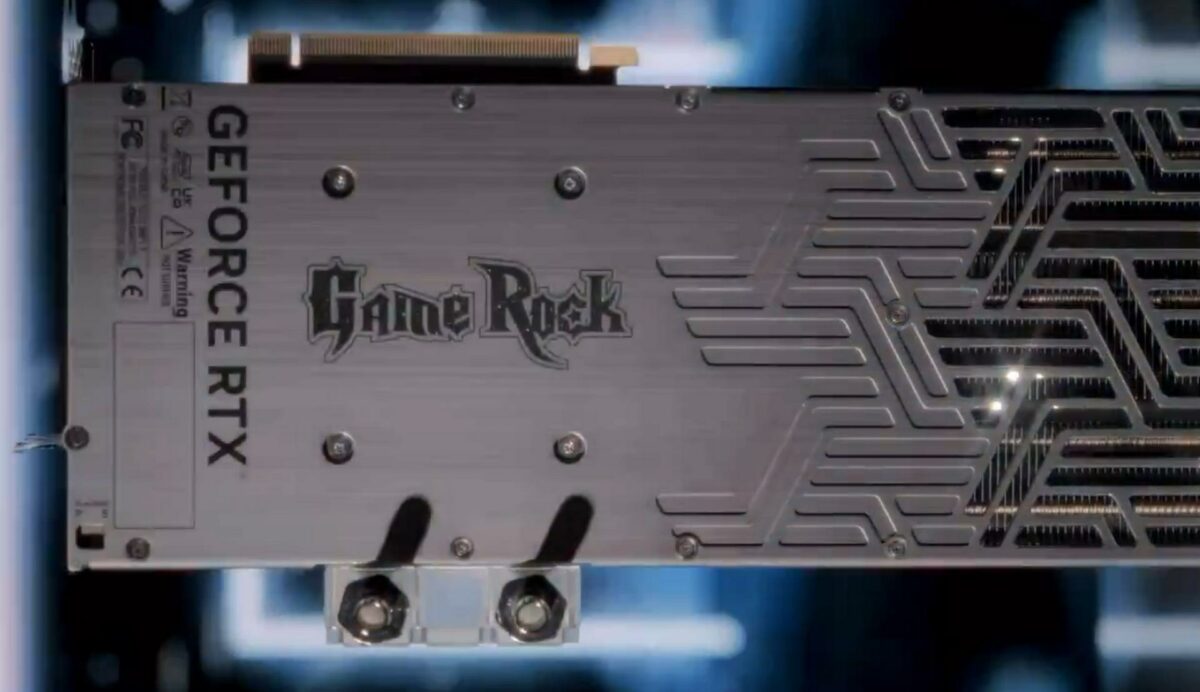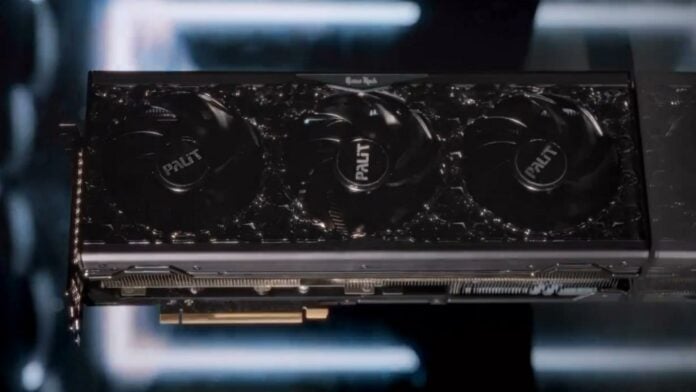Palit is readying a hybrid-cooled graphics card based on its GameRock series. The idea is to combine the benefits of air and liquid coolers to offer a single ultimate solution.
Palit has announced its new design via X, teasing big things for Computex. Marking a first for the GameRock series, this cooling solution fuses air and liquid cooling systems into one, with circulation pipes and heatsinks both touching the GPU core. This should, in theory, improve cooling performance while providing redundancy in case the pump or fans stop working.

While rarely used by graphics card manufacturers due to its complicated design, this is not the first time we see this cooling concept on a GPU – or CPU, for that matter. Even the laptop segment has its share of hybrid solutions from companies such as XMG and its gaming laptop that can be paired with the Oasis external liquid cooling loop. The last desktop graphics card I remember boasting a similar cooler was the Asus ROG Poseidon GTX 980 – back when GPUs didn’t require a loan. So, as far as I can tell, this is a first on an RTX 4000 GPU.
Other than the inclusion of the liquid-cooled system, from the outside, this newcomer resembles your regular GameRock graphics card with its gorgeous glowing stone effect. Palit’s model seems to be about 3.5-slot wide, meaning that cards that are exclusively liquid-cooled still hold the size benefit. Another advantage to this approach is the potential cooling of other components, such as VRAM and power delivery systems, which often get left aside on liquid-cooled models.
What is sure is that we are happy to see brands trying novel designs instead of settling for what is good enough. Palit plans to release more information – potentially including a release date – in two weeks during Computex.

